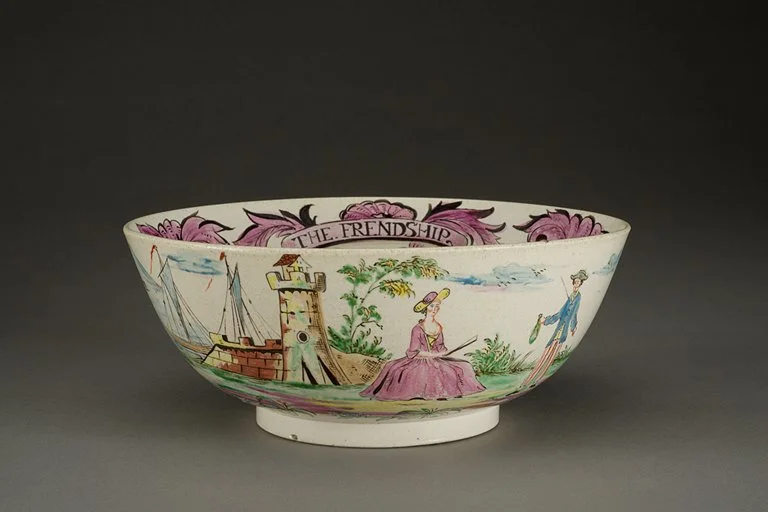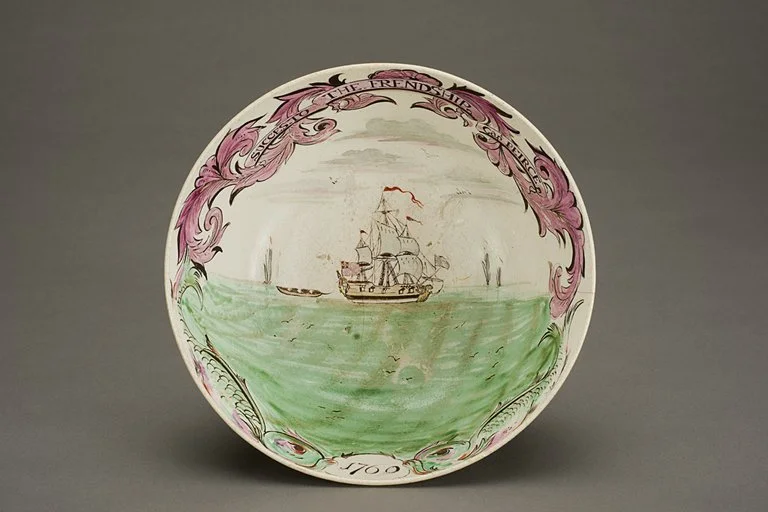Punchbowl, Staffordshire (probably), England, ceramic: white salt-glazed stoneware with overglaze polychrome enamels, height: 8.2 cm. (3 1/4 in.), diameter: 22 cm. (7 15/16 in.), 1760, Courtesy of Historic Deerfield.
This hand-painted, salt-glazed, decorative stoneware punch bowl served as an opulent commemorative object, likely presented to Captain Pearce of the slave ship Friendship by the ship’s investors to celebrate a successful voyage. The bowl’s interior features an image of a three-masted sailing ship with the inscription “Success to the Frendship, Capt Peirce (sic).” The exterior portrays two main scenes: on one side, a seated lady in front of a turreted tower alongside a standing sailor holding a purse; on the other, separated by water, five enslaved men load barrels, possibly with tobacco.
The bowl illustrates, albeit romantically, the triangular trade of the late eighteenth century. Departing from Liverpool, the Friendship headed to Bonny, Nigeria. The architecture depicted might represent slave castles on Africa’s west coast, built to hold captured Africans before shipment. The ship then continued to the Caribbean, where the enslaved Africans were sold, and returned with goods like sugar, rum (one of the main ingredients of punch), and tobacco, harvested by other enslaved people, as shown in the second scene. In the trope of The Sailor’s Return, the British man presents the riches gained. While the exact disembarkation point is unknown, only 209 of the 276 enslaved people embarked successfully made it to the destination.
This piece is particularly significant as the earliest known dated example of a ceramic object depicting a British or American slave ship, and for being composed of white salt-glazed stoneware, rather than porcelain, earthenware, or creamware. The bowl embodies the height of British colonial power on display. However, this imagery will shift at the turn of the nineteenth century, as anti-slavery movements adopt similar propaganda practices to promote abolition.






